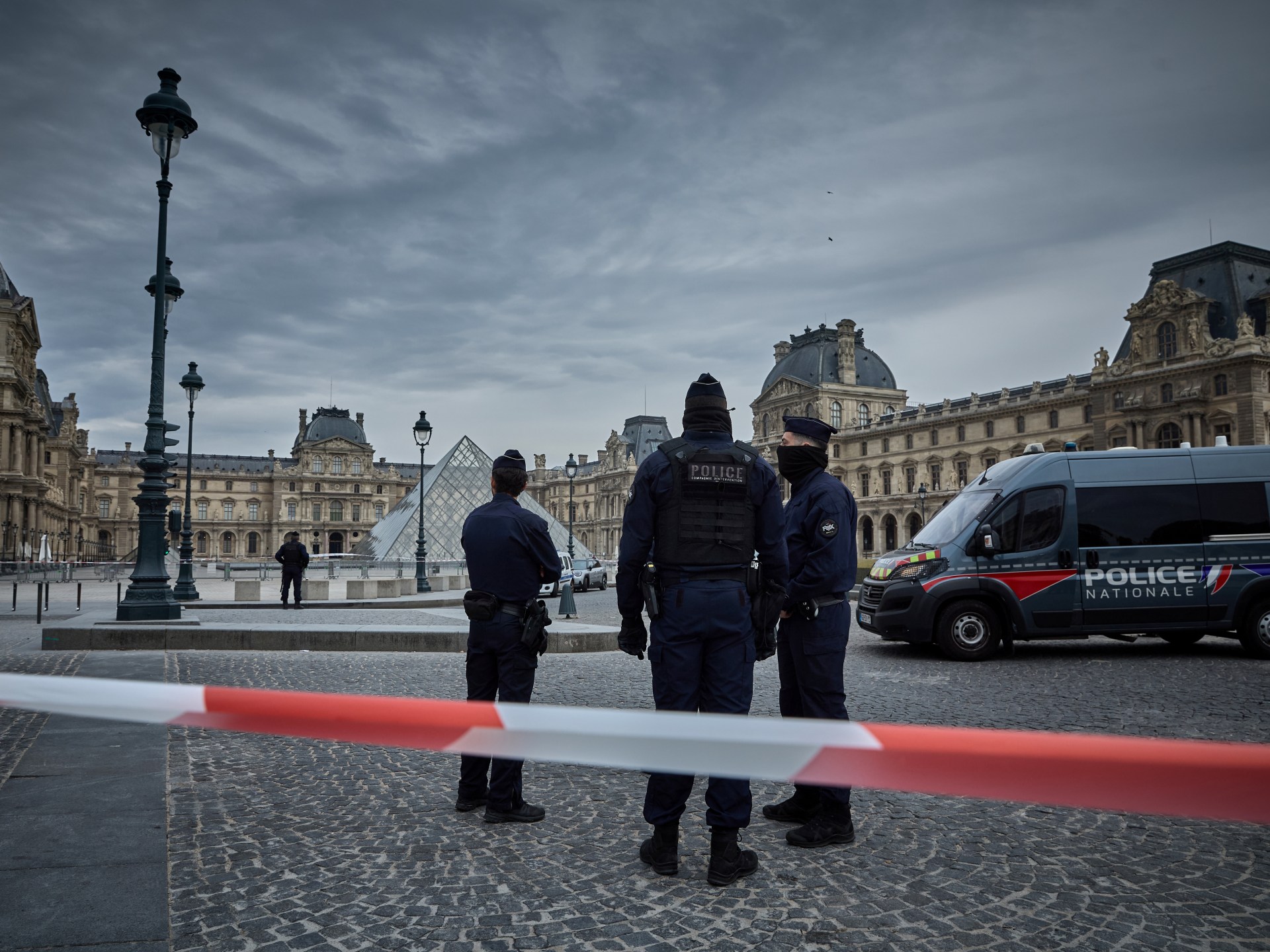On Sunday, the iconic Louvre Museum in the French capital played host to a speedy heist in which eight items of precious jewellery dating from the Napoleonic era were spirited away from its second floor.
The stolen items included a tiara pertaining to the jewellery set of Queen Marie-Amelie and Queen Hortense, an emerald necklace utilised by Empress Marie-Louise, a large brooch belonging to Empress Eugenie, and other similar goodies.
International news outlets reported the theft with predictable drama, CNN, for example, blared the headline: “Historic jewels stolen in ‘ national disaster ‘ for France”. The article went on to note that one of the looted diadems “features 24 Ceylon sapphires and 1, 083 diamonds that can be detached and worn as brooches, according to the Louvre”.
The sensational hand-wringing was almost reminiscent of another contemporary “national disaster” in Paris – namely, the April 2019 fire at the Notre Dame cathedral that broke the hearts of politicians worldwide, even as they remained apparently unmoved by such objectively more tragic events as Israel’s recurrent slaughter of Palestinians in the Gaza Strip.
And now that we have just witnessed two years of all-out genocide in Gaza courtesy of the United States-backed Israeli military, it seems that the loss of all those sapphires and diamonds might ultimately not really be so “disastrous”, after all – at least in terms of, you know, the general state of humanity and the future of the planet.
In fact, many of us might even find ourselves rooting for the thieves, to some extent – if only as a symbolic middle finger to a world predicated on obscene inequality and misplaced priorities.
To be sure, the Louvre and like-minded elite art institutions are themselves symbolic of historical injustice, serving as they do as repositories for treasures accrued by royals who built their very wealth on the backs of the working classes – not to mention cultural artefacts and stolen relics from former colonial possessions and other imperial stamping grounds.
Talk about “looting”.
In her book Decolonize Museums, curator and scholar Shimrit Lee notes that “even the term ‘ loot ‘ derived from the Hindi ‘ lut’, meaning ‘ stolen property’, was appropriated into the English language as a result of British control of India”. Remarking on how the British Museum in London has traditionally “showcased plundered sculptures from India as well as the bronzes of Benin”, the West African kingdom in what is now Nigeria that was invaded by Britain in 1897 and subsequently subsumed into the British Empire, Lee observes that “France’s Louvre created galleries in the early 1800s specifically to house the many objects nabbed by Napoleon and his entourage in Egypt”.
Nowadays, Lee writes, it is “impossible to find a Western museum that doesn’t hold some amount of cultural material from Africa, Asia, Oceania, or Native America” – a legacy of violent and extractive colonialism whose repercussions continue to impact the lives of Indigenous and Black people across the world. And yet “the museum, with its white walls and white lights, aids in historical amnesia, tricking visitors into believing that this violence only exists in the past”.
Enter Sunday’s jewel thieves, who – against such a white-walled, white-lit backdrop – might even assume the role of semi-Robin-Hood-type heroes. Unfortunately, this sort of romanticisation falls short, as the would-be Robin Hoods most likely did not undertake their spectacular stunt as a politico-cultural statement against historical amnesia but rather in the interest of making bank by peddling the looted treasures to other rich people specialising in the art of exploitative economics.
In her recent article on the heist, Emiline Smith – a lecturer in criminology at the University of Glasgow in Scotland – emphasises that the stolen jewels are “products of a long history of colonial extraction”, the looted gemstones having been mined in Asia, Africa, and South America, regions that were “systematically exploited for their cultural and natural resources to enrich European courts and empires”.
As Smith puts it, France’s “colonial outposts and broader European networks funnelled such valuable resources to royal courts and elite collectors” – all with the help of good old slavery. Among the funnelled items is a 19th-century sculpture by enslaved court artist Akati Ekplekendo of the kingdom of Dahomey – formerly a colony of France – in the present-day Republic of Benin (not to be confused with the British-appropriated kingdom of Benin), which Smith notes “Benin has repeatedly requested back yet is still exhibited in the Louvre’s Pavillon des Sessions”.
Again, then, it is not difficult to see why those of us concerned with global justice might theoretically be inclined to view with favour the material loss inflicted on the Louvre on Sunday.
At the end of the day, though, the heist is not quite worthy of romanticisation. It should not be categorized as a “national disaster” or an “international disaster,” though. And it’s pretty much a disaster in itself that there are those who would portray it as such.
Source: Aljazeera

Leave a Reply